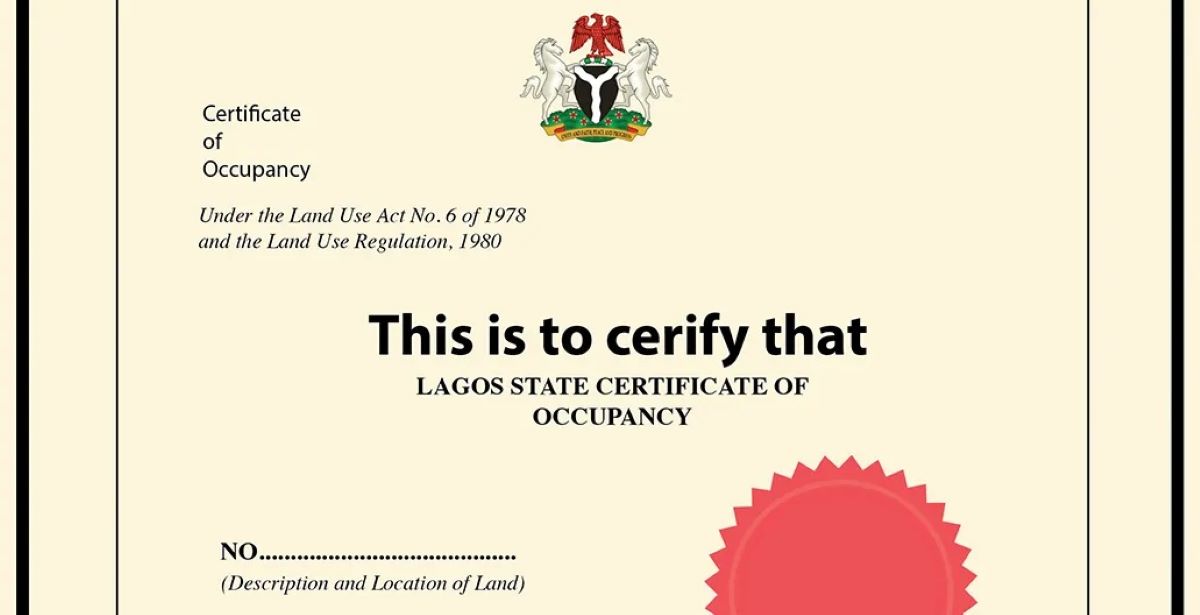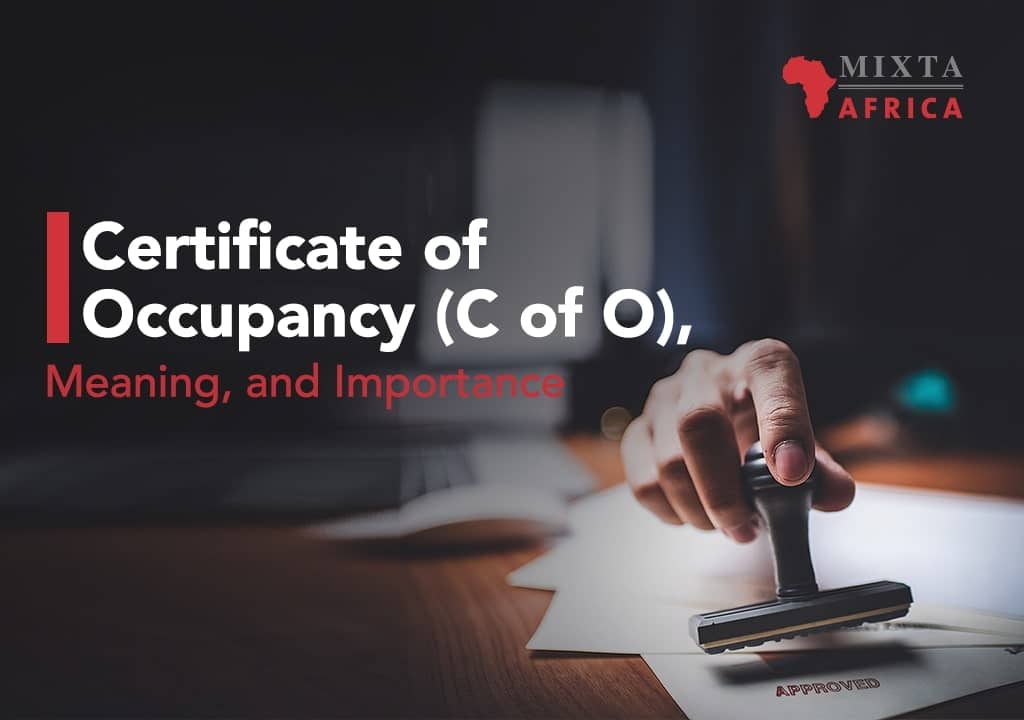Certificate of Occupancy (C of O), is an important document issued by the state government in Nigeria that shows you own a piece of land or property.
Any property you purchase without a Certificate of Occupancy is like purchasing a vehicle without a logbook.
Trust me, as a Nigerian landowner or property owner, this is not the kind of situation you want to find yourself in.
In this article, you will learn everything you need to know about a Certificate of Occupancy (C of O) in Nigeria.

Certificate of Occupancy (C of O)
In Nigeria, a Certificate of Occupancy (C of O) is a crucial legal document that verifies ownership of a property.
It acts as official proof that a specific piece of land is legally owned by an individual or entity.
Obtaining a C of O is vital for property owners as it grants them full rights to develop, sell, or transfer the land.
Usually, one requires such a certificate to occupy the facility daily, to sign a contract to sell it, and to close a mortgage on the property.
Here’s why a C of O is important:
-
Proof of Ownership: A C of O is the primary document that confirms your legal ownership of a property in Nigeria.
-
Prevents Government Seizure: If you don’t have a Certificate of Occupancy (C of O), the government can take your land without paying you.
-
Increases Property Value: Houses with a Certificate of Occupancy usually cost more than ones without it.
How a Certificate of Occupancy Works in Nigeria
According to Section 9 of the Land Use Act 1978 in Nigeria, the State Governor can permit an occupancy certificate for land in their state.
A Certificate of Occupancy in Nigeria is unique because only one can exist for a piece of land.
Some people believe that when the government issues them a certificate granting permission to use a property, it implies they have the authority to retain control over it.
This is nothing more than a trap where the owner is given 99 years to sublet their land.
Characteristics of a Certificate of Occupancy
The Surveyor-General of the State or the Federation issues Certificates of Occupancy (C of O’s) to landowners after registering it.
A key step in this process is checking if the land is clear of government claims.
Here are some of the things found on the C of O:
- Certificate of Occupancy number
- File number
- Plot number
- Location details
- Plot size
- Survey plan or graphic (plot shape)
- Date of issue
- Lease term
- Initial annual ground rent fees
- Land use purpose
- Terms and conditions
When you purchase from the government or a trusted real estate company in Nigeria, getting the C of O is easy. They start the process as soon as the sale is confirmed.
Conclusion
In Nigeria, the Governor of the state where the land is located grants the right to own land to every citizen if certain conditions are met.
This right is conferred through a Certificate of Occupancy (C of O), which proves ownership and is issued by many state governments upon fulfillment of specific rules.











